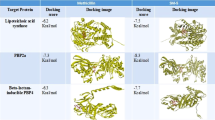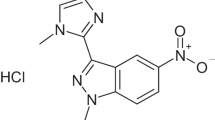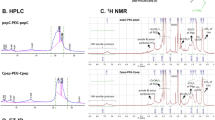Abstract
The incorporation of β-amino acids into peptides is a promising approach to develop proteolytically stable therapeutic agents. Short α/β hybrid peptides containing tBu-β3,3Ac6cː H2N-Lys-tBu-β3,3Ac6c-PEA, P1; H2N-Orn-tBu-β3,3Ac6c-PEA, P2; H2N-Arg-tBu-β3,3Ac6c-PEA, P3; LA-Lys-tBu-β3,3Ac6c-PEA, P4; LA-Orn-tBu-β3,3Ac6c-PEA, P5; LA-Arg-tBu-β3,3Ac6c-PEA, P6; LAu-Lys-tBu-β3,3Ac6c-PEA, P7; LAu-Orn-tBu-β3,3Ac6c-PEA, P8; and LAu-Arg-tBu-β3,3Ac6c-PEA, P9 were prepared. The antimicrobial efficacies of all the peptides were evaluated against ESKAPE pathogens, along with a small panel of multi-drug resistant (MDR) clinical isolates of S. aureus. Among all the peptides, P4, P6, and P7 showed significant efficacies against P. aeruginosa, S. aureus, and MRSA with an MIC value ranging from 6.25 to 12.5 μM. Further, in vitro, anti-staphylococcal assessment with their antimicrobial synergy of the peptides P4, P6, and P7 was carried out against MRSA, due to its better efficacy. The peptides P6 and P7 exhibited MRSA biofilm inhibition of 70% and 77%, respectively, at 4×MIC concentration. At its MIC concentration, about 19% hemolysis was observed for P4, P6, and P7.
This is a preview of subscription content, access via your institution
Access options
Subscribe to this journal
Receive 12 print issues and online access
$259.00 per year
only $21.58 per issue
Buy this article
- Purchase on SpringerLink
- Instant access to full article PDF
Prices may be subject to local taxes which are calculated during checkout





Similar content being viewed by others
References
Santajit S, Indrawattana N. Mechanisms of antimicrobial resistance in ESKAPE pathogens: BioMed Research International, 2016;2475067.
Aslam B, Aslam B, Wang W, Arshad MI, Khurshid M, Muzammil S, Rasool MH, Nisar MA, Alvi RF, Aslam MA, Qamar MU, Salamat MKF. Antibiotic resistance: a rundown of a global crisis. Infect Drug Resist. 2018;11:1645–58.
Huan Y, Kong Q, Mou H, Yi H. Antimicrobial peptides: classification, design, application and research progress in multiple fields. Front Microbiol. 2020;11:582779.
Hicks RP, Bhonsle JB, Venugopal D, Koser BW, Magill AJ. De novo design of selective antibiotic peptides by incorporation of unnatural amino acids. J Med Chem. 2007;50:3026–36.
Gentilucci L, De Marco R, Cerisoli L. Chemical modifications designed to improve peptide stability: incorporation of non-natural amino acids, pseudo-peptide bonds, and cyclization. Curr Pharm Des. 2010;16:3185–203.
Cabrele C, Martinek TA, Reiser O, Berlicki Ł. Peptides containing β-amino acid patterns: challenges and successes in medicinal chemistry. J Med Chem. 2014;57:9718–39.
Wani NA, Singh G, Shankar S, Sharma A, Katoch M, Rai R. Short hybrid peptides incorporating β-and γ-amino acids as antimicrobial agents. Peptides. 2017;97:46–53.
Shankar SS, Benke SN, Nagendra N, Srivastava PL, Thulasiram HV, Gopi HN. Self-assembly to function: design, synthesis, and broad spectrum antimicrobial properties of short hybrid E-vinylogous lipopeptides. J Med Chem. 2013;56:8468–74.
Benke SN, Thulasiram HV, Gopi HN. Potent antimicrobial activity of lipidated short α, γ‐hybrid peptides. ChemMedChem. 2017;12:1610–5.
Aguilar M-I, Purcell AW, Devi R, Lew R, Rossjohn J, Smith AI, Perlmutter P. β-Amino acid-containing hybrid peptides—new opportunities in peptidomimetics. Org Biomol Chem. 2007;5:2884–90.
Schmitt MA, Weisblum B, Gellman SH. Interplay among folding, sequence, and lipophilicity in the antibacterial and hemolytic activities of α/β-peptides. J Am Chem Soc. 2007;129:417–28.
Chowdhary R, Mubarak MM, Kantroo HA, ur Rahim J, Malik A, Sarkar AR, Bashir G, Ahmad Z, Rai R. Synthesis, characterization, and antimicrobial activity of ultra-short cationic β-peptides. ACS Infect Dis. 2023;9:1437–48.
Schmitt MA, Weisblum B, Gellman SH. Unexpected relationships between structure and function in α, β-peptides: antimicrobial foldamers with heterogeneous backbones. J Am Chem Soc. 2004;126:6848–9.
Vestergaard M, Skive B, Domraceva I, Ingmer H, Franzyk H. Peptide/β-peptoid hybrids with activity against vancomycin-resistant enterococci: influence of hydrophobicity and structural features on antibacterial and hemolytic properties. Int J Mol Sci. 2021;22:5617.
Ur Rahim J, Singh G, Shankar S, Katoch M, Rai R. Tetrahydropiperic acid (THPA) conjugated cationic hybrid dipeptides as antimicrobial agents. J Antibiot. 2021;74:480–3.
Shankar S, Jyothi D, Rahim JU, Pal PC, Singh UP, Rai R. Conformation of achiral α/β hybrid peptides containing glycine and 1‐aminocyclohexaneacetic acid: ChemistrySelect. 2022;7:e202104453.
Lehto T, Vasconcelos L, Margus H, Figueroa R, Pooga M, Hällbrink M, Langel U. Saturated fatty acid analogues of cell-penetrating peptide PepFect14: role of fatty acid modification in complexation and delivery of splice-correcting oligonucleotides. Bioconjugate Chem. 2017;28:782–92.
Violette A, Fournel S, Lamour K, Chaloin O, Frisch B, Briand JP, Guichard G. Mimicking helical antibacterial peptides with nonpeptidic folding oligomers. Chem Biol. 2006;13:531–8.
Kavaliauskas P, Acevedo W, Garcia A, Naing E, Grybaite B, Sapijanskaite-Banevic B, Grigaleviciute R, Petraitiene R, Mickevicius V, Petraitis V. Exploring the potential of bis (thiazol-5-yl) phenylmethane derivatives as novel candidates against genetically defined multidrug-resistant Staphylococcus aureus. Plos one. 2024;19:e0300380.
Oliveira W, Silva PMS, Silva RCS, Silva GMM, Machado G, Coelho LCBB, Correia MTS. Staphylococcus aureus and Staphylococcus epidermidis infections on implants. J Hospital Infect. 2018;98:111–7.
Bhattacharya M, Wozniak DJ, Stoodley P, Hall-Stoodley L. Prevention and treatment of Staphylococcus aureus biofilms. Expert Rev Anti Infect Ther. 2015;13:1499–516.
Lister JL, Horswill AR. Staphylococcus aureus biofilms: recent developments in biofilm dispersal. Front Cell Infect Microbiol. 2014;4:178.
Acknowledgements
The authors are grateful to the Director, CSIR-IIIM, Jammu, for providing laboratory facilities to conduct this research. The work was supported by the internal institutional grant (MLP-110011) and (IIRP-0715/2023) from the Council of Scientific and Industrial Research (CSIR) and the Indian Council for Medical Research (ICMR) Government of India. ARS and RM thanks CSIR-IIIM for providing the project fellowship. JK and RC thank the Council of Scientific and Industrial Research (CSIR), India, for providing the fellowship. AR and SF thank the University Grant Commission (UGC), India, for providing the fellowship. The institutional publication number of the article is CSIR-IIIM/IPR/00727.
Author information
Authors and Affiliations
Corresponding authors
Ethics declarations
Conflict of interest
The authors declare no competing interests.
Additional information
Publisher’s note Springer Nature remains neutral with regard to jurisdictional claims in published maps and institutional affiliations.
Supplementary information
Rights and permissions
Springer Nature or its licensor (e.g. a society or other partner) holds exclusive rights to this article under a publishing agreement with the author(s) or other rightsholder(s); author self-archiving of the accepted manuscript version of this article is solely governed by the terms of such publishing agreement and applicable law.
About this article
Cite this article
Sarkar, A.R., Kumari, J., Rathore, A. et al. Antimicrobial activity of α/β hybrid peptides incorporating tBu-β3,3Ac6c against methicillin-resistant Staphylococcus aureus. J Antibiot 77, 794–801 (2024). https://doi.org/10.1038/s41429-024-00773-9
Received:
Revised:
Accepted:
Published:
Issue date:
DOI: https://doi.org/10.1038/s41429-024-00773-9
This article is cited by
-
Synthesis and antibacterial evaluation of trisindolines against methicillin-resistant Staphylococcus aureus targeting cell membrane
npj Biofilms and Microbiomes (2025)



